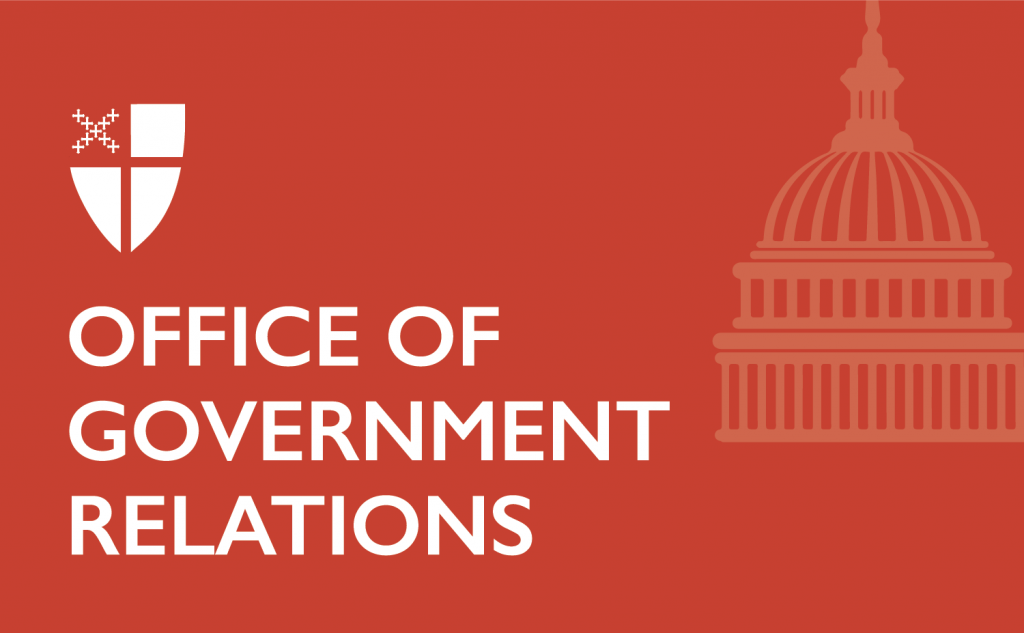Climate Migration Abroad and At Home
EPPN Creation Care Series 2021 Part 3
Want to be a climate action advocate? You can still register for Ecumenical Advocacy Days next week from April 18th-21st! Presiding Bishop Michael Curry will preach at the Sunday service.
Imagine waking up to water filling up your home. Imagine the panic setting in as your house slowly floats away beneath your feet. Imagine the sea swallowing your country. For people in Small Island Developing States like the Maldives and Marshall Island, this is their new reality. With rising sea levels and increasing floods, the daily decision to stay becomes more of a fight against nature. When these islands disappear, we don’t just lose land. We lose stories of our past, stories of who we are.
Many of our biblical ancestors were climate migrants. Naomi and her family resettled in Moab during a severe famine (Ruth 1). Joseph’s brothers similarly traveled all the way to Egypt to plead for food during a drought, eventually immigrating to Egypt with their entire family when Joseph revealed five more years of famine were still to come (Genesis 42-45). As Christians we are called to respond to moments like these with compassion and action.
International Climate Migration
As temperatures continue to rise and global ecosystems shift, geographically remote and low-lying island populations will remain most vulnerable to environmental challenges. Small island nations such as Tuvalu, the Maldives, and Mauritius face the risk of going completely underwater by the end of the century. In total, an estimated 65 million people will be forced to relocate.
Most vulnerable communities, however, will suffer because climate change acts like a “threat multiplier.” Storms are stronger; droughts are more intense; extreme heat lasts longer. These environmental disasters destroy homes and livelihoods, cause food and water shortages, and increase the risk of civil unrest. As stability erodes, those with the ability to voluntarily migrate often do, leaving the poorest and most vulnerable trapped in an increasingly unlivable community.
Most climate migration occurs within a country’s borders. As climate change shifts local weather patterns and make subsistence agriculture increasingly unsustainable, rural workers move to cities hoping to find a new source of employment. If urban centers fail to accommodate this rapid urbanization, slums grow, social services are overwhelmed, and the gap between rich and poor widens.
Back Home in the U.S
The U.S. will have to grapple with its own internal climate migration. Unlike other regions, the U.S population has gravitated towards environmental perils, building along coastlines from California to Florida and settling across the deserts of the Southwest. Eight of the nation’s largest metropolitan cities, including Miami, New York, and Boston, will be impacted by sea level rise, affecting almost 50 million residents. Additionally:
- In 2020, 900 California wildfires incinerated six times as much land as all the state’s 2019 wildfires combined, forcing 100,000 people from their homes.
- Nearly 1 in 2 Americas will experience a decline in their environmental quality due to heat waves or water shortages in their lifetime.
- By 2070, 4 million Americans could live outside the ideal niche for human life, given current warming patterns and sea level rise.
- Decreasing crop yields throughout the Great Plains region could cause rampant food insecurity.
Homeowner’s insurance policies that mandate rebuilding on the disaster sites and federal agriculture programs that pay growers to replant failed crops encourage unsustainable development, increasing the risk of sudden and catastrophic migration in the future. Private insurance companies are beginning to respond to climate risk, withdrawing policies from high-risk areas or raising premiums. For example, Florida property owners experienced a pseudo-crash in homeowners’ insurance after Hurricane Andrew as companies recognized this $16 billion disaster would likely occur again and declined to renew policies, moving their business out of state. The Florida state government created a state-run company to insure properties itself, but this cost taxpayers $511 billion in liabilities, seven times more than the state’s total budget.
On an urban planning level, coastal cities will need to fortify existing infrastructure to withstand greater storm surges and build more retaining walls. Fort Lauderdale, New York and even Philadelphia might soon require sea walls and bridges to connect neighborhoods. But not every city can spend $100 billion on a sea wall, and rural areas along the coast without a strong tax base may need to consider mitigation or even planned retreat strategies.
Moving On
As followers of Jesus, we ask ourselves, “How can I love my neighbor?” Passing a federal infrastructure bill would create resilient communities and infrastructure better equipped to handle extreme weather events. International development programs and funding mechanisms that integrate climate planning and resiliency allow more people to safely live and prosper in their home communities. General Convention resolutions encourage humanitarian assistance in recovery and prevention of natural disasters which often results in climate migration. Resilience is possible and necessary as we respond to a warming world.
Additional Resources
- The Great Climate Migration – ProPublica, The New York Times Magazine, and the Pulitzer Center
- President Biden’s Executive Order on Refugee Resettlement and Climate Migration
Episcopal Church Resolutions
Contact:
The Office of Government Relations
eppn@episcopalchurch.org

